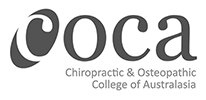Chiropractic care during pregnancy
The news of a pregnancy is exciting. Unfortunately, it may also bring with it some unpleasant side effects. Many women take symptoms such as sciatic pain, mid & upper back tension and headaches as part and parcel of being pregnant. Chiropractic care during pregnancy has been used for almost 120 years. The techniques used during pregnancy are gentle and effective and have no known contraindications of chiropractic care during your pregnancy.
Chiropractic adjustments to the mid back spinal curve help maintain the integrity of the nervous system and your centre of gravity, which can help relieve mid back pain and tension. Chiropractic adjustments to the mid to lower back can help with lower back pain, sciatica and pelvic pain.
Symptoms during pregnancy are largely a result of physiological and endocrinological changes that are necessary to create a favourable environment in which your baby can flourish. A pregnant woman may experience the following changes as a result of a misaligned spine or muscle tension:
- Pelvic, pubic or sciatic discomfort
- Chest tightness
- Neck, shoulder, wrist or carpal tunnel
- Abdominal tightness, decreased baby movements
Possible benefits of chiropractic care during pregnancy include:
- Encouraging less discomfort during pregnancy
- Ensuring optimal pelvic alignment
- Minimising the symptoms of back and neck pain
- Reducing abdominal fascial tension (tissue that hold the baby in position)
Causes of low back pain during pregnancy
Structural adaptation in the gravid patient is a contributory source of low back pain throughout gestation. Spinal dysfunction related to changing load distributions within the motion segments of the lumbar spine and sacroiliac joints are also a factor in back pain.2 Traction, pressure or stretch of the adnexa, parietal peritoneum, bladder, urethra, rectum, and pelvic structures can also cause referred pain and secondary muscle spasm.2 Although the female sacrum has enough depth to enable fetal carriage, the displaced weight gain of 25 to 35 lb greatly increases the stress to the sacroiliac joints.7,8 As the fetus develops during gestation, this weight is projected forward and the lumbar lordosis is increased, placing extra stress on the intervertebral disks and facet joints. Through compensation, the sagittal curvature of the remainder of the spinal column increases as well. The lumbar lordosis, designed to absorb some of the axial forces, loses integrity as a static support and may be a source of discogenic injury.9 In addition, the increase in circulating progesterone, estrogen, and relaxin throughout gestation, especially in the third trimester, brings about pelvic hypermobility and creates a decrease in spinal stabilization.9 Direct pressure of the fetus on the lumbosacral nerve roots may also be a cause of pain.4 Physically strenuous work and previous low back pain are factors that may also be associated with an increased risk of developing low back pain and sacroiliac dysfunction during pregnancy.3 All of these factors contribute to back pain experienced by the pregnant patient, leading some gravid patients to seek chiropractic care.
Chiropractic for babies and children
Just like adults, infants suffer from what might seem a small things like only breastfeeding on one side, to larger issues such as hip dysplasia and many others in between.
Adults can vocally express their concerns/pains but children and infants can’t!
Chiropractic for infants is remarkable safe and very gentle. Specific techniques that Dr Paul use are often soothing and relaxing for the unsettled baby.








